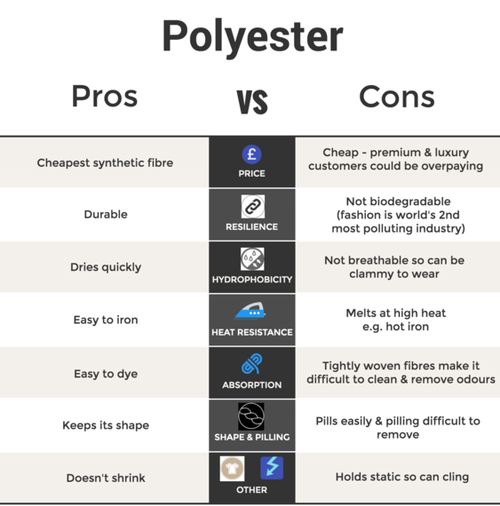If you're buying polyester then, potentially, the answer is yes. Its tightly woven fibres can make it difficult to clean and, in particular, to remove odours which can cling and quickly become indelible.
Polyester is also the cheapest fabric on the market so you may be overpaying. This is worth bearing in mind for those buying premium and luxury brands where this fabric is being used more than ever before.
But surely there is a limit to which product costs can be cut before the product becomes compromised.
With this in mind I want to share what I have learned about what makes a quality garment. This is the first of a number of articles to help people know what they're buying before they part with their hard-earned cash.
A few years ago I left finance to set up a womenswear brand - Rose & Willard. We've been making our entire range, from start to finish, in-house for some time. For me, it's been a very interesting and detailed learning curve.
I begin with polyester mainly because it's no longer just a high street fabric - it is the most widely used fabric across every price tier.
Polyester has had a bad reputation since the leisure suits of the 1970s. Technology may have improved its look and feel but its key characteristics are generally unchanged.
Here's a quick chart of this fabric's pros and cons.


The following charts show how popular it's become and where it is mostly made (around 70% comes from China).
On the point of price - polyester is cheap to buy because it's cheap to make. In fact it is cheaper to make than any other synthetic fibre. The most expensive polyester I have found was less than £12/m and that was from one of the finest mills in Italy. Most polyesters cost less than £3/m . To put this in context, most dresses can be made from less than 2m of fabric. A trouser suit needs no more than 3m of fabric.
Polyester is made from oil.
It is made by combining two oil-derived products - PTA (purified terephthalic acid) and MEG (mono ethylene glycol - which is also used in antifreeze). Melting and spinning produces polyester fibre, otherwise known as PET (polyethylene terephthalate). PET is the same material used to make plastic bottles which explains polyester's durability.
Oil accounts for around 50% of the cost of PET. Therefore polyester pricing is correlated to the oil price .
Currently the oil price is over 50% below its five-year average (see chart below). That should mean that clothes made from polyester are cheaper now than they were a few years ago (all else being equal). But that doesn't seem to be the case...
So is the moral of the story not to buy polyester at all? No - but people should know what they're buying and whether it's worth the price tag.
My personal recommendation is that if you do buy polyester then opt for polyester blended with other fabrics. For example, it will make wool more durable and cotton easier to iron. In turn these fabrics lend their qualities, such as their breathability, which is not be sniffed at...